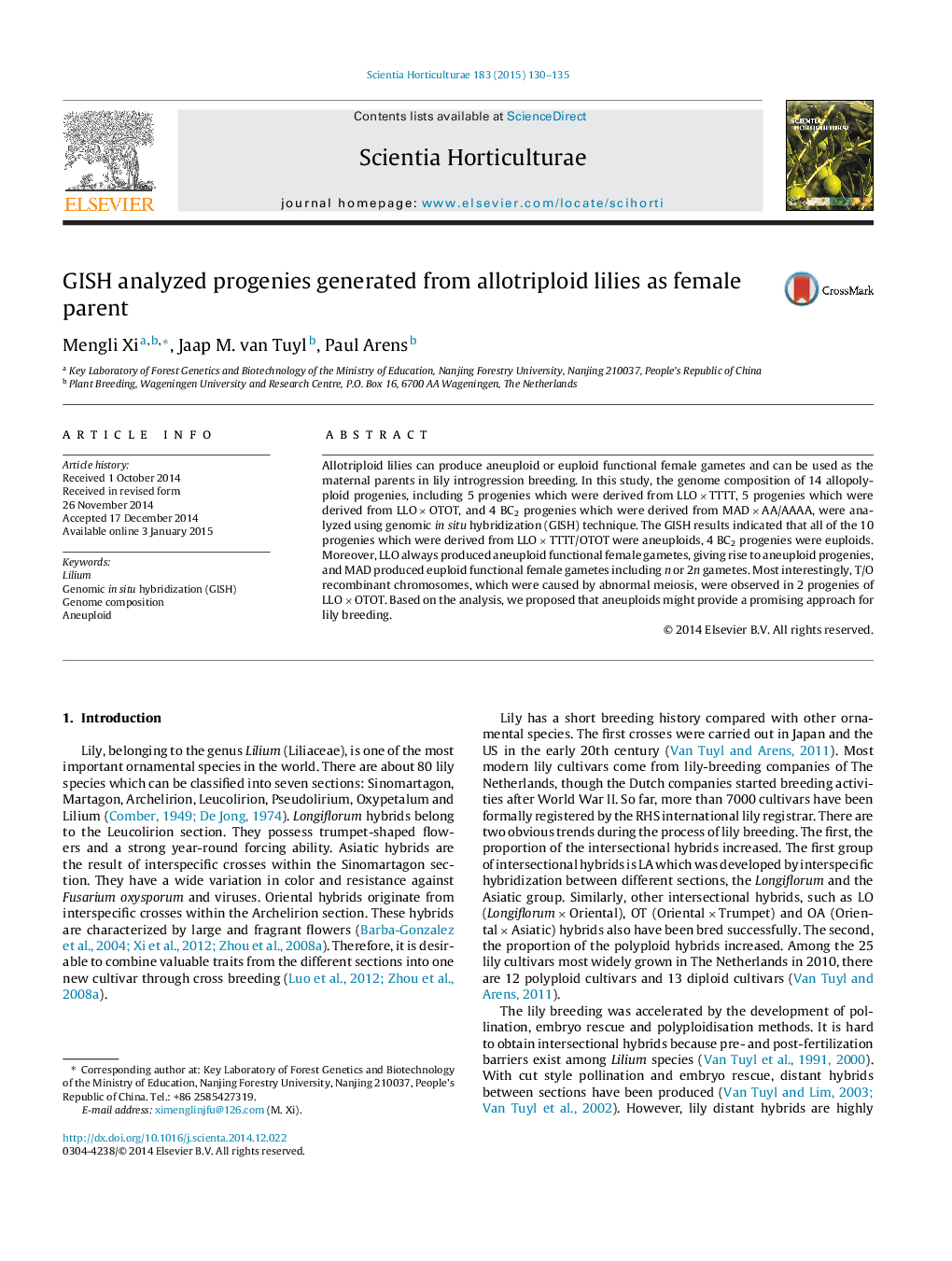| کد مقاله | کد نشریه | سال انتشار | مقاله انگلیسی | نسخه تمام متن |
|---|---|---|---|---|
| 6407138 | 1628815 | 2015 | 6 صفحه PDF | دانلود رایگان |

- Allotriploid lilies can be used as maternal parents for lily introgression breeding.
- It is possible to combine three different sections (L, O and T) into one cultivar through cross breeding.
- Allotriploid lily (LLO) produced aneuploid functional female gametes, and allotriploid lily (MAD) produced euploid functional female gametes including n or 2n gametes.
- Amphidiploid lily (OTOT) could produce gametes containing intergenomic recombinant chromosomes.
- Aneuploids provide a promising approach for lily breeding.
Allotriploid lilies can produce aneuploid or euploid functional female gametes and can be used as the maternal parents in lily introgression breeding. In this study, the genome composition of 14 allopolyploid progenies, including 5 progenies which were derived from LLOÂ ÃÂ TTTT, 5 progenies which were derived from LLOÂ ÃÂ OTOT, and 4 BC2 progenies which were derived from MADÂ ÃÂ AA/AAAA, were analyzed using genomic in situ hybridization (GISH) technique. The GISH results indicated that all of the 10 progenies which were derived from LLOÂ ÃÂ TTTT/OTOT were aneuploids, 4 BC2 progenies were euploids. Moreover, LLO always produced aneuploid functional female gametes, giving rise to aneuploid progenies, and MAD produced euploid functional female gametes including n or 2n gametes. Most interestingly, T/O recombinant chromosomes, which were caused by abnormal meiosis, were observed in 2 progenies of LLOÂ ÃÂ OTOT. Based on the analysis, we proposed that aneuploids might provide a promising approach for lily breeding.
Journal: Scientia Horticulturae - Volume 183, 12 February 2015, Pages 130-135